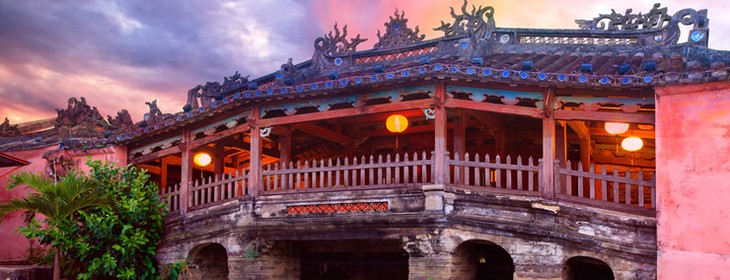(VOVworld)- Vietnam has 17 UNESCO-recognized heritage sites, of which 2 are natural, 5 are cultural, and 1 is a combined cultural and natural heritage and the rest are tangible or intangible cultural remains. This heritage reflects the beauty of Vietnam’s natural landscape and the richness of Vietnam’s culture.

Hoi An ancient town- Photo:internet |
The 17 UNESCO-recognized heritages are scattered throughout Vietnam. Hue’s Ancient Citadel was recognized by UNESCO as a World Cultural Heritage in 1993. Ha Long Bay was recognized as a World Natural and World Geological Heritage in 1994 and 2000. Hoi An Ancient Town and My Son were also recognized in 1999. In 2003, Phong Nha Ke Bang National Park was recognized as a World Natural Heritage Site and 7 years later, Thang Long Royal Citadel also joined the list. Then in 2011, it was the turn of the Citadel of the Ho Dynasty.

Phong Nha-Ke Bang- Photo:internet |
Trang An Relic Complex with its rich flora system, primeval forest and eco-system was recognized as a World Natural and Cultural Heritage last year. Dang Thi Bich Lien is Deputy Minister of Culture, Sports and Tourism: “Vietnam’s cultural values have been praised in several leading world publications. In addition to acknowledging Trang An’s cultural values, the Assessment Committee of UNESCO applauded Trang An as one of the few world scenic landscape complexes that have preserved their pristine natural value. UNESCO Heritage Committee consultants praised the Trang An complex as one of the most wonderful sites in Southeast Asia.”
Vietnam has 9 intangible cultural heritage sites as recognized by UNESCO. Hue royal court music was Vietnam’s first recognized by UNESCO in 2003. This genre of music was played in royal courts for more than 10 centuries. The Cultural Space of Gong in the Central Highlands was recognized as a Masterpiece of the Oral and Intangible Cultural Heritage of Humanity in 2005. 4 years later, Quan Ho folk singing was recognized by UNESCO for its rich cultural values, social customs, art performances, song techniques, the beautiful lyrics and its customs. That year, Ca Tru ceremonial singing was also recognized as a World Intangible Cultural Heritage and Oral Masterpiece of Humanity in urgent need of protection. This music genre is popular across 15 cities and provinces in northern Vietnam.

Trang An relic |
2 years later, the Saint Giong festival in Phu Dong, Soc temple and Xoan singing of Phu Tho province became intangible cultural heritages of humanity in urgent need of protection. In 2009, UNESCO also recognized the worship of Hung Kings and southern amateur singing. Late last year, the Vi Giam folk singing of Nghe An and Ha Tinh province became an intangible cultural heritage of humanity. It is popular among the locals in central Nghe An and Ha Tinh provinces. They sing Vi Giam to lull their babies to sleep or while they are working in the field. Vi Giam lyrics praise respected values, the tradition of respecting parents, faithfulness and devotion to others as well as treating each other with respect. Associate Professor Nguyen Chi Ben said:“The vitality of Vi Dam folk songs is reflected in their popularity, from lullabies for babies to fishing chants. These folk songs are often sung with the accents of the Nghe An and Ha Tinh regions. This feature makes Vi Giam live long among the local community but makes it hard spread beyond the region”.
Vietnam also has 3 documentary heritages recognized by UNESCO. They include Woodblocks from the Nguyen Dynasty which consist of 34,618 wooden plates which were engraved with Chinese-Chinese Vietnamese (Han-Nom) scripts and used to print books in Vietnam in the 19th and 20th centuries. With their special cultural and historical values, 82 stone steles at the Temple of Literature in Hanoi dedicated to doctorate holders under the Le-Mac dynasties from the 15th to the 18th century and the woodblocks at the Vinh Nghiem Pagoda have also been recognized as intangible cultural heritages.

My Son relic site |
Lan Anh